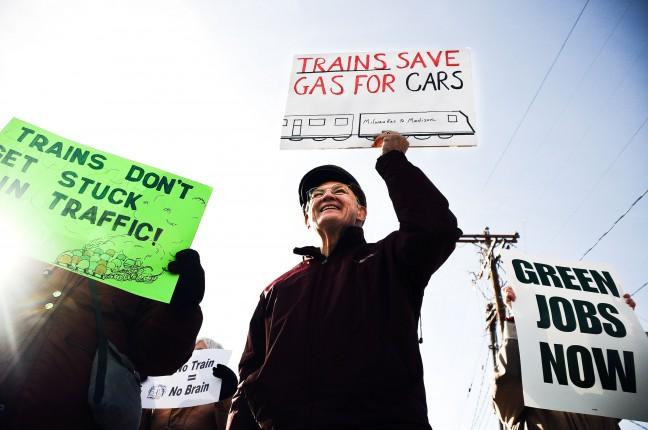In many ways, the United States was built on the railroad industry.
Dating back to the 1800s, railways were integral to the nation’s westward expansion and industrialization. The industry provided fast transportation, added thousands of jobs to the economy and stimulated the development of other industries like coal and steel.
Today, the nation’s trains continue to be a huge sector of the economy, transportation and innovation. In 2019, the total operating revenue of U.S. Class I rail was over $74 billion.
While critical to the U.S. at large, the railroads are also essential for Wisconsin and the Midwest. As states with a relatively productive agricultural sector, railroads provide a fast and simple transportation system to carry crops across the Midwest and the nation. Freight trains can also carry in materials used by the manufacturing or industrial sectors, which are also large contributors to the Midwestern economy.
In recent years, states like Wisconsin, Minnesota, Iowa and Illinois have all petitioned for the expansion of the rail industry through the Midwest Regional Rail Initiative, which would add over 3,000 miles of high-speed rail systems to connect the region.
While the railroad continues to be a crucial piece of the Midwest and the U.S. at large, the industry is by no means perfect. Recent derailments in Ohio and Minnesota have raised concerns over the state of the railroad’s infrastructure. Additionally, increasing environmental consequences and worsening labor shortages have investors worried about the future of the nation’s trains.
It is true that railroads have not been the most well-maintained over the decades. According to data submitted to the Surface Transportation Board by the four biggest train companies in the U.S., overall on-time performance fell from 85% to 67% in 2022 due to crew and maintenance shortages.
Not only is performance lagging, but working conditions are worsening, as well. The occupational exposure that train engineers face while on board has been shown to increase the risks of lung cancer due to diesel exhaust.
This does not have to mean the end of the railroad. Implementing more passenger rails across the nation could be a big step toward a greener transportation network.
Particularly in the Midwest, where cities are few and far between, a passenger train system like the one proposed by the Midwest Regional Rail Initiative would not only provide residents without a car an affordable option for travel, but would also help crack down on pollution from vehicles if there was an alternative option to getting from city to city.
It is particularly common in Midwestern states like Wisconsin for workers to live in suburbs or rural areas outside of the major cities and commute to work. Having a railway available for daily commutes could drastically reduce the number of cars on the road every day.
Freight trains still have potential, too. However, the state of the railroads meant to carry diesel trains full of heavy material or crops is rapidly deteriorating. Further, as the truck industry has grown and the railroad has declined in staff and in maintenance, shipping companies have started to favor trucks to haul their shipments across the country.
To avoid future derailments and renew the interest in freight trains, the U.S. has to start investing in safer and more efficient electric train systems.
As the nation progresses and evolves, so must its railroads. It is critical that the U.S. shifts from coal-run trains to electric ones, which means that the rails themselves must be updated for this transition. Midwestern states like Ohio and Minnesota have only been the first to experience these dramatic and dangerous derailments as the railroads continue to age — now is as good a time as ever to use this opportunity to completely transform the railroads for the better.
Fiona Hatch (fhatch@badgerherald.com) is a senior studying political science and international studies.


